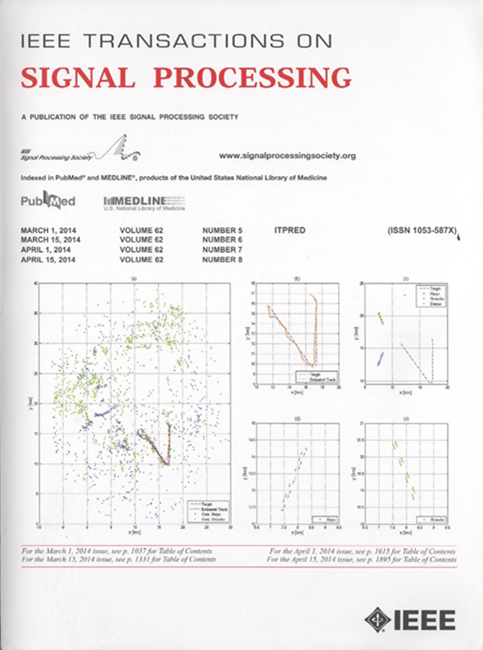Bayesian Two-Sample Hypothesis Testing Using the Uncertain Likelihood Ratio: Improving the Generalized Likelihood Ratio Test
IF 4.6
2区 工程技术
Q1 ENGINEERING, ELECTRICAL & ELECTRONIC
引用次数: 0
Abstract
Two-sample hypothesis testing is a common practice in many fields of science, where the goal is to identify whether a set of observations and a set of training data are drawn from the same distribution. Traditionally, this is achieved using parametric and non-parametric frequentist tests, such as the Generalized Likelihood Ratio (GLR) test. However, these tests are not optimal in a Neyman-Pearson sense, especially when the number of observations and training samples are finite. Therefore, in this work, we study a parametric Bayesian test, called the Uncertain Likelihood Ratio (ULR) test, and compare its performance to the traditional GLR test. We establish that the ULR test is the optimal test for any number of samples when the parameters of the likelihood models are drawn from the true prior distribution. We then study an asymptotic form of the ULR test statistic and compare it against the GLR test statistic. As a byproduct of this analysis, we establish a new asymptotic optimality property for the GLR test when the parameters of the likelihood models are drawn from the Jeffreys prior. Furthermore, we analyze conditions under which the ULR test outperforms the GLR test, and include a numerical study to validate the results.使用不确定似然比的贝叶斯双样本假设检验:改进广义似然比检验
双样本假设检验在许多科学领域是一种常见的做法,其目标是确定一组观察数据和一组训练数据是否来自同一分布。传统上,这是使用参数和非参数频率测试来实现的,例如广义似然比(GLR)测试。然而,这些测试在内曼-皮尔逊意义上并不是最优的,特别是当观察值和训练样本的数量是有限的时候。因此,在这项工作中,我们研究了一个参数贝叶斯检验,称为不确定似然比(ULR)检验,并将其性能与传统的GLR检验进行了比较。我们建立了当似然模型的参数来自真实先验分布时,对于任何数量的样本,ULR检验都是最优检验。然后,我们研究了ULR检验统计量的渐近形式,并将其与GLR检验统计量进行比较。作为这一分析的副产品,当似然模型的参数来自Jeffreys先验时,我们为GLR检验建立了一个新的渐近最优性。此外,我们分析了ULR测试优于GLR测试的条件,并包括一个数值研究来验证结果。
本文章由计算机程序翻译,如有差异,请以英文原文为准。
求助全文
约1分钟内获得全文
求助全文
来源期刊

IEEE Transactions on Signal Processing
工程技术-工程:电子与电气
CiteScore
11.20
自引率
9.30%
发文量
310
审稿时长
3.0 months
期刊介绍:
The IEEE Transactions on Signal Processing covers novel theory, algorithms, performance analyses and applications of techniques for the processing, understanding, learning, retrieval, mining, and extraction of information from signals. The term “signal” includes, among others, audio, video, speech, image, communication, geophysical, sonar, radar, medical and musical signals. Examples of topics of interest include, but are not limited to, information processing and the theory and application of filtering, coding, transmitting, estimating, detecting, analyzing, recognizing, synthesizing, recording, and reproducing signals.
 求助内容:
求助内容: 应助结果提醒方式:
应助结果提醒方式:


